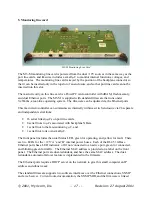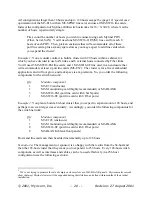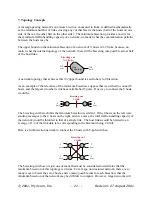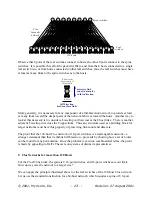
© 2001, Myricom, Inc.
-- 23 --
Revision: 27 August 2001
Spine switches
Clos
“spreader”
network
128 hosts
Leaf
switches
Observe that 8 ports of the leaf switches connect to hosts; the other 8 ports connect to the spine
switches. It is possible that all of the packet traffic to and from the 8 hosts connected to a single
leaf switch is to or from hosts connected to other leaf switches; thus, the leaf switches must have
at least as many links to the spine switches as to the hosts.
8
hosts
8
links to the
deeper parts of
the network
preserves link
count (data rate)
in this direction
full bisection
between these links
More generally, it is necessary for any component of a full-bisection network to provide at least
as many links toward the deeper parts of the network fabric as toward the hosts. Another way to
look at this necessity is to consider a bisecting cut that crosses the 8 host links. There is another,
adjacent, bisecting cut across the 8 upper links. Thus, any structure used as a building block for
larger networks must have this property of preserving link count and data rate.
The proof that the 128-host Clos network of 16-port switches is a rearrangeable network – a
stronger statement than that it exhibits full bisection – proceeds by showing how a set of routes
can be found for any permutation. Once the problem is cast into combinatorial terms, the proof
is made by appealing to Hall’s Theorem on systems of distinct representatives.
9. Clos Networks for more than 128 Hosts
For the Clos128 network, the spine is 8 16-port switches, and 16-port switches are our limit.
How do we scale the network to a larger size?
We can apply the principle illustrated above for the leaf switches of the 128-host Clos network.
Let us use the standard construction for a 64-host network, which requires a spine of 8 8-port



































